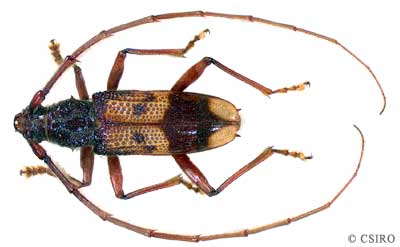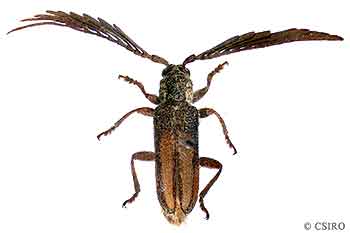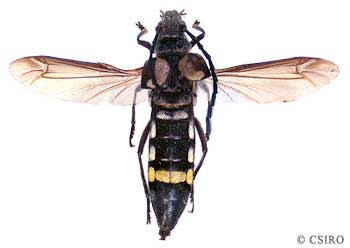|
CERAMBYCIDAE: Longicorn or Long-Horned Beetles Members of this family are known as long horned or longicorn beetles due to the long antennae possessed by most adults. Most have antennae at least two thirds as long as their bodies, while some species have antennae much longer. Longicorn beetles range in size from about 3 to 80 millimetres in length and usually appear elongate and flattened, although some may be more rounded. Adults have prominent mandibles and kidney shaped eyes, which partly surround the base of the antennae. Many adult longicorn beetles are known to feed on pollen while others may eat leaves or bark.
Almost all longicorn larvae appear grub-like and are cream to white in colour, long and thin and usually legless. All are borers in wood of trees and shrubs, feeding on the soft tissue of living, dead or dying plants.
For more longicorn beetle species visit the Australian Insect Common Names - website. |



